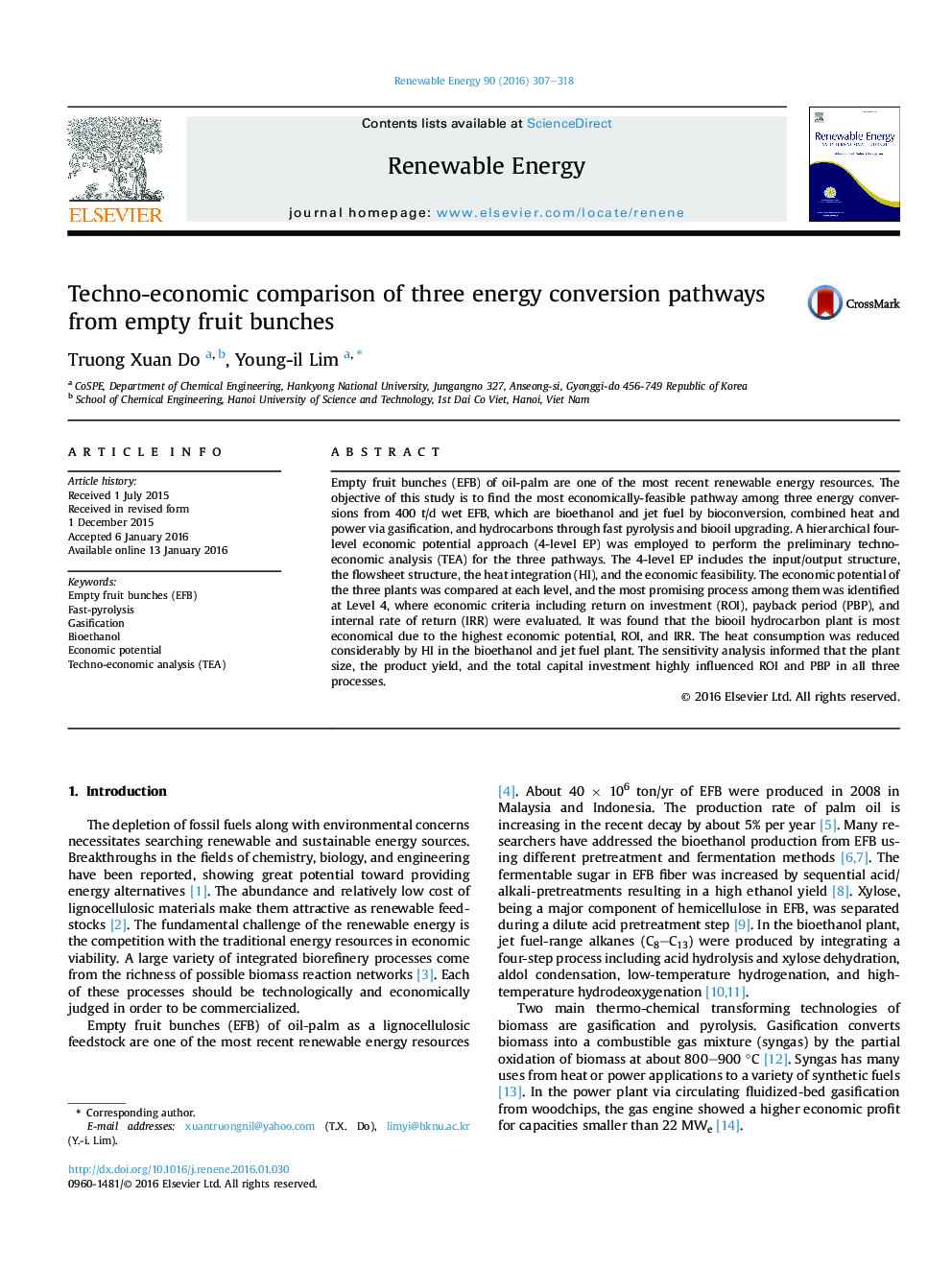| Article ID | Journal | Published Year | Pages | File Type |
|---|---|---|---|---|
| 299833 | Renewable Energy | 2016 | 12 Pages |
•Evaluation of techno-economic feasibility by 4-level economic potential approach.•Comparison of three energy conversion pathways from 400 t/d wet EFB.•The three pathways include fast pyrolysis, gasification and bioethanol production.•The fast pyrolysis and biooil upgrading plant shows the highest economic viability.
Empty fruit bunches (EFB) of oil-palm are one of the most recent renewable energy resources. The objective of this study is to find the most economically-feasible pathway among three energy conversions from 400 t/d wet EFB, which are bioethanol and jet fuel by bioconversion, combined heat and power via gasification, and hydrocarbons through fast pyrolysis and biooil upgrading. A hierarchical four-level economic potential approach (4-level EP) was employed to perform the preliminary techno-economic analysis (TEA) for the three pathways. The 4-level EP includes the input/output structure, the flowsheet structure, the heat integration (HI), and the economic feasibility. The economic potential of the three plants was compared at each level, and the most promising process among them was identified at Level 4, where economic criteria including return on investment (ROI), payback period (PBP), and internal rate of return (IRR) were evaluated. It was found that the biooil hydrocarbon plant is most economical due to the highest economic potential, ROI, and IRR. The heat consumption was reduced considerably by HI in the bioethanol and jet fuel plant. The sensitivity analysis informed that the plant size, the product yield, and the total capital investment highly influenced ROI and PBP in all three processes.
